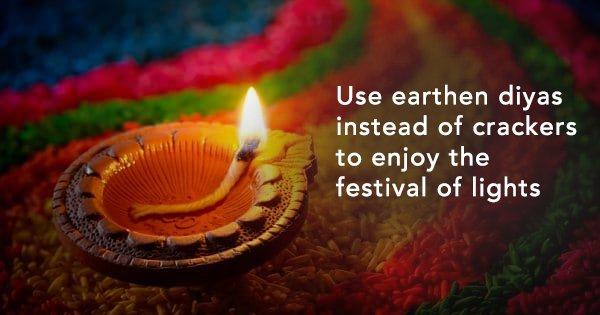Leaving the din of the city behind and heading up towards the chilly altitudes of the mountains, we pass tiny hamlets and towns with colourful prayer flags, casually strung and fluttering serenely in the breeze overhead. They make for a welcoming sight for weary travelers and bestow good wishes on the surrounding area. But ever wondered what the colours of those flags really signify?
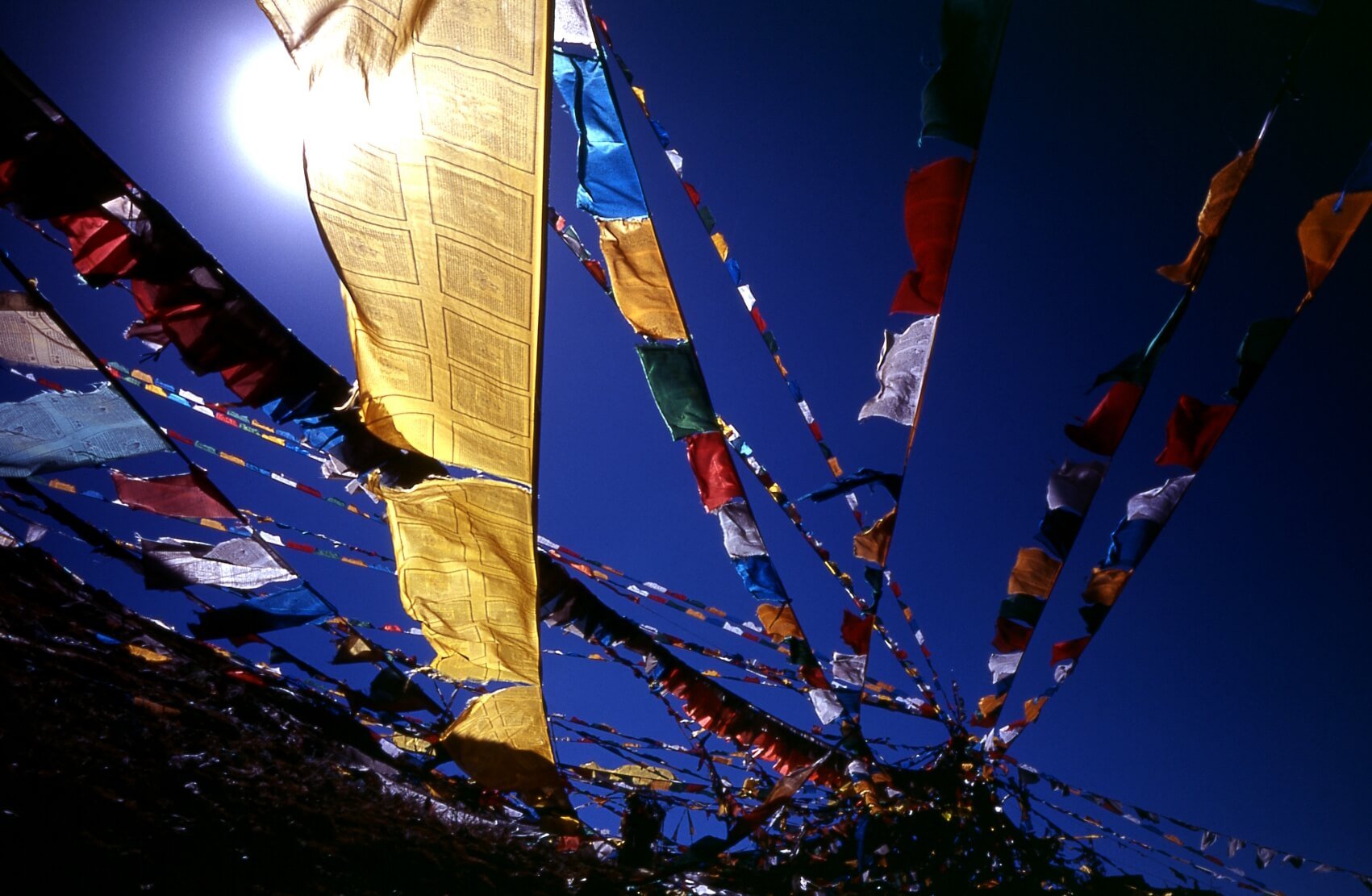
The answer is rooted in Buddhism. The Tibetan term for prayer flag is ‘Dar Cho’. The term ‘Dar’ means to augment health, wealth, happiness, life and fortune and ‘Cho’ refers to living beings. These gently waving prayer flags are said to send out positive energy, with the aid of the wind which pervades the area, bringing happiness and well-being to all.
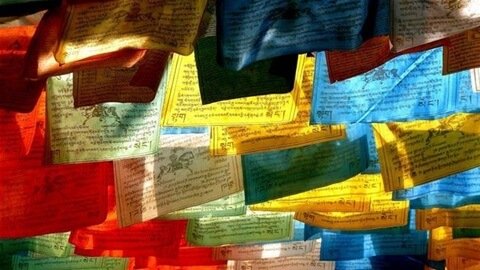
The tradition of colourful prayer flags is believed to have been started by those who followed the Bon tradition in preBuddhist Tibet. Shamanistic bonpo priests used these flags in primary colours to heal people. These colourful flags signify the basic elements which form physical bodies and the environment, like water, earth, fire and air. Specifically organised flags on a patient’s body were believe to harmonise the elements within his body and bring him back to a balanced, healthy state.
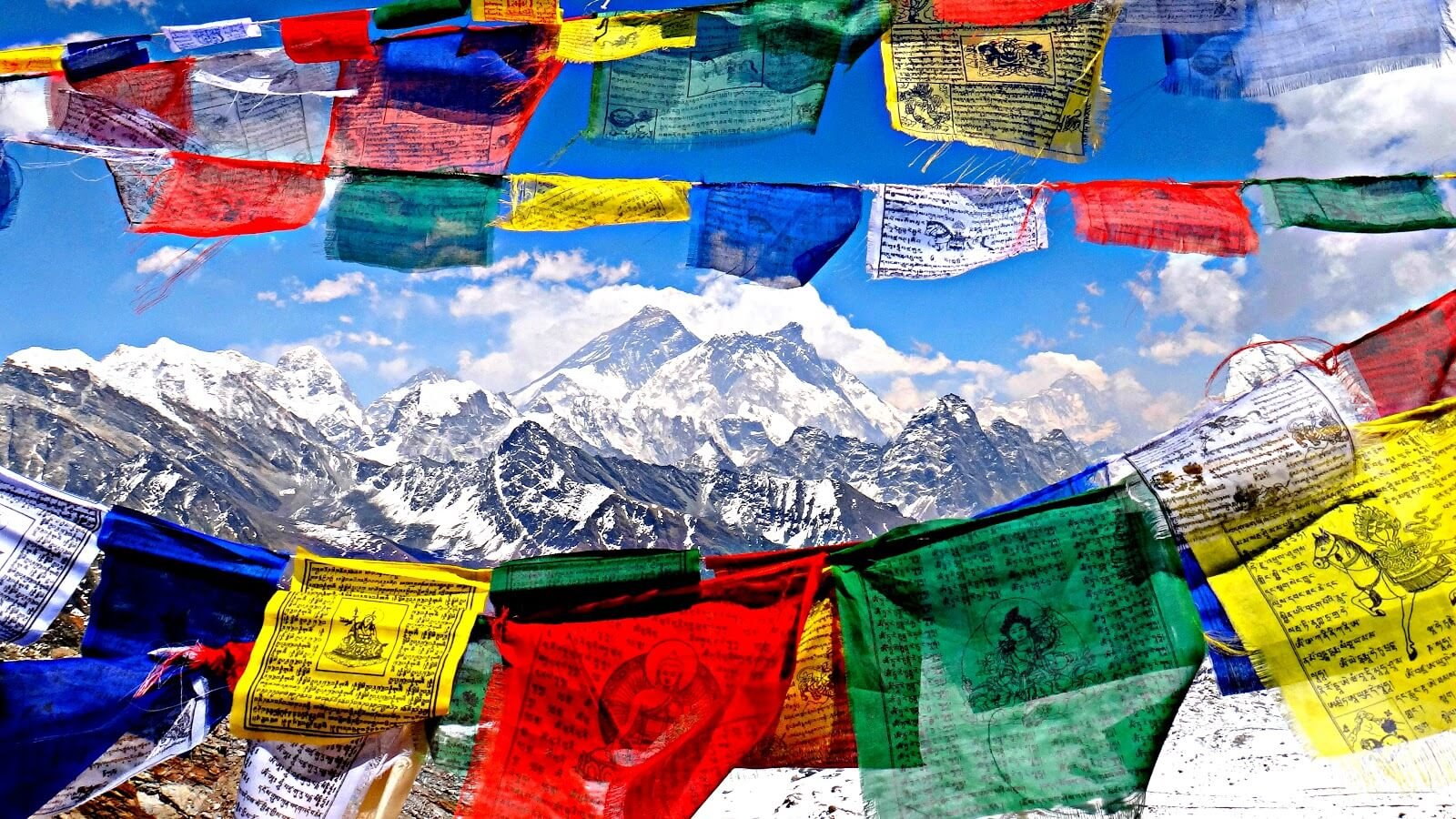
Initially, these flags were hung up to propitiate deities that were believed to reside in the surrounding mountains, valleys,lakes and rivers. If the deities were displeased they could bring about catastrophic natural calamities and diseases. The Bonpos made ritual offerings and strung the flags to balance the elements in the environment and keep the deities appeased; their way of coexisting with nature.
In present day, the flags in different colours have either mantras or sutras printed on them. The colours are significant as they represent the five elements which make up everything.
Blue flags symbolize the element sky or space.
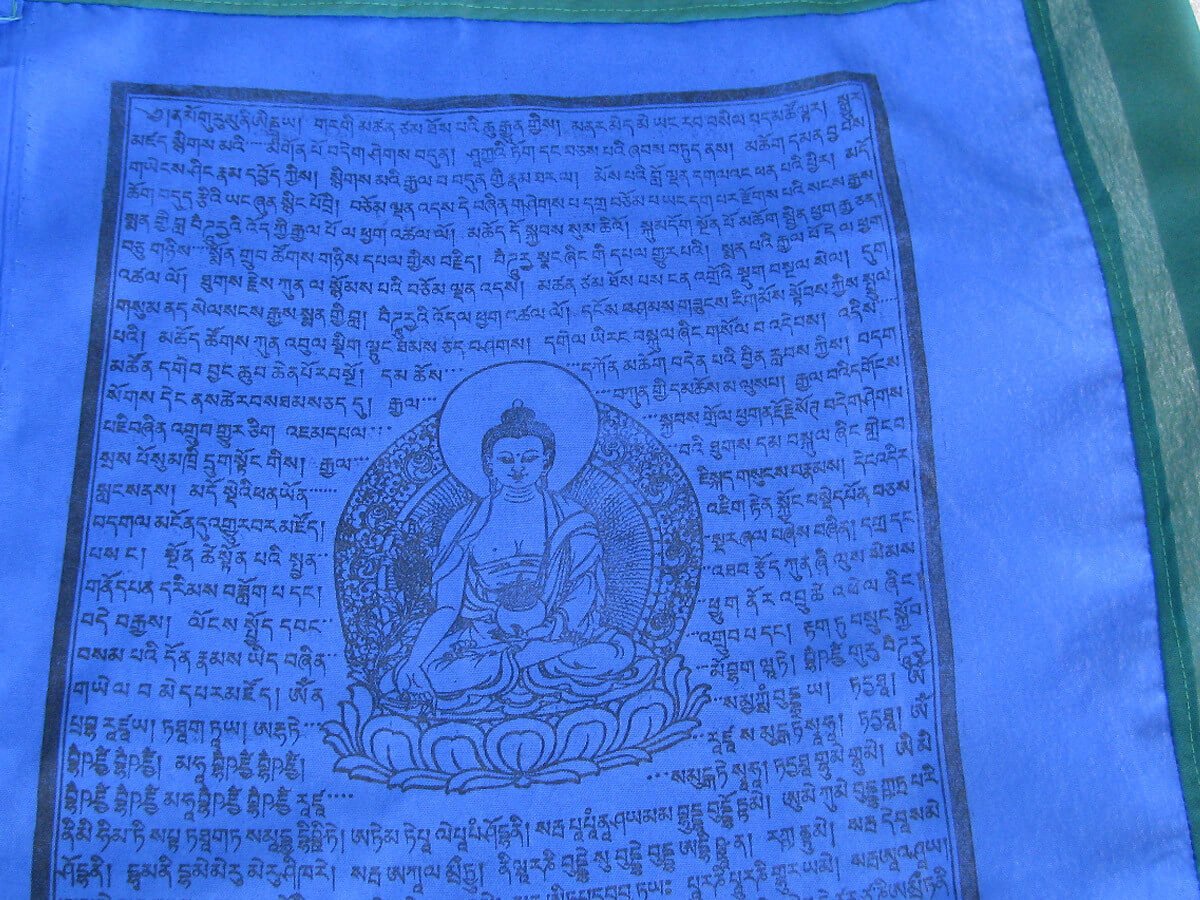
The white flags stand for the element of air.
If meditated upon, white can cut the delusion of ignorance and turn it into the wisdom of reality.
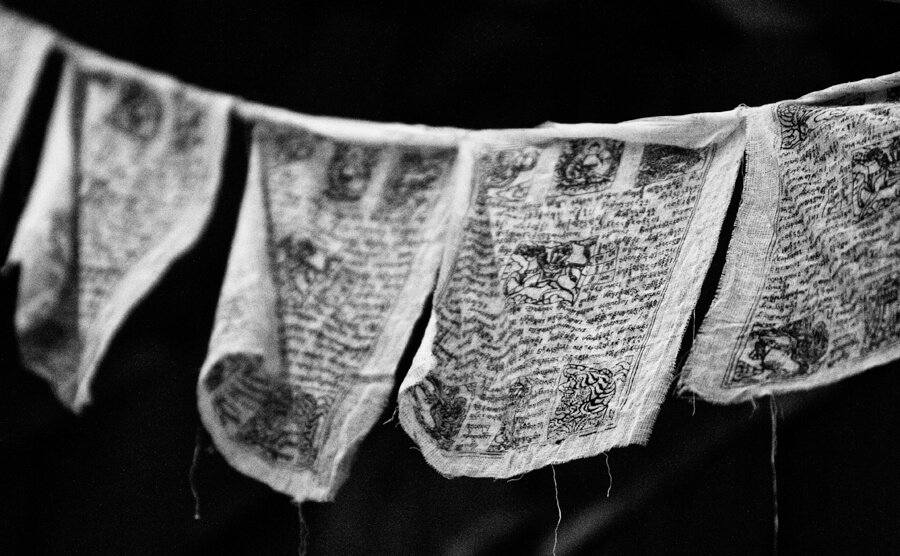
The red flag is indicative of fire.
In canonical texts, in Buddhism, out of the four ‘great’ elements, fire represents heat or energy, both internal and external.
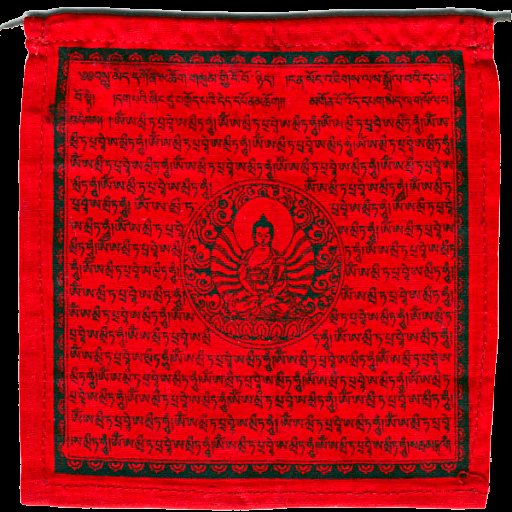
The green colour stands for water and nature.
Water represents liquidity of motion. Some say meditating on this colour can help one get rid of jealousy.
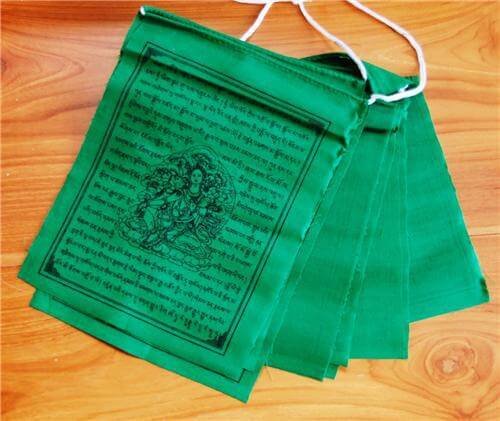
Yellow symbolises earth.
Yellow represents solid elements. Internal earth elements would be bone, sinew, teeth and skin.
These five colours of Tibetan prayer flags also stand for the five main directions, which are north, south, east, west and center. The flags stand for the five wisdoms in Buddhism which are compassion, wisdom of sight, harmony, kindness and perfect wisdom.
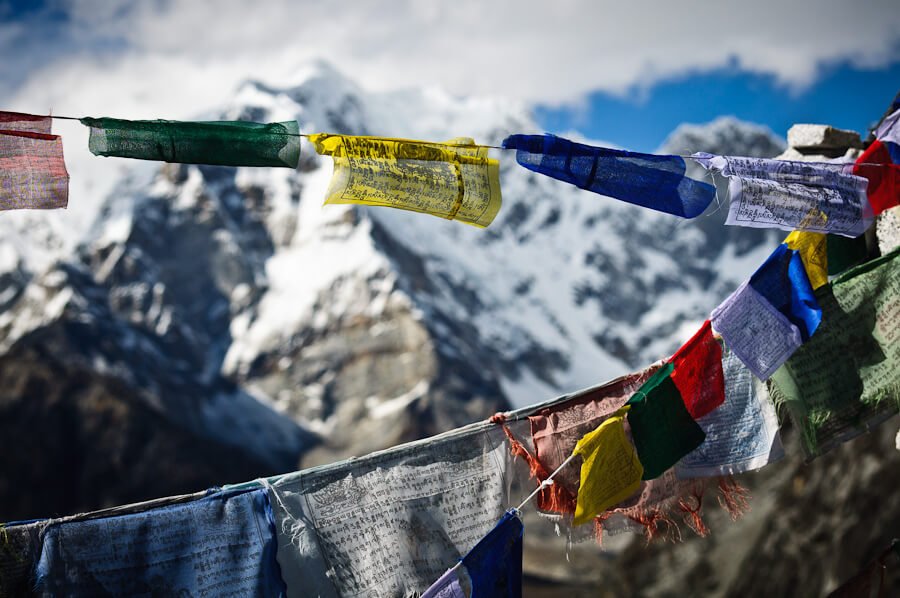
The sutras and mantars on flags were originally handwritten. Sutras and mantras originated in India. Mantras are power laden syllables which can influence energy in the environment. These mantras have special vibrations that can control the forces that govern our entire existence. These mantras are in Sanskrit and they are chanted in monasteries for the positive vibrations they carry.
Sutras are short pieces of text derived directly from Shakyamani Buddha’s discourses in India 2500 years ago. These prayer flag are powerful in that they create powerful vibrations that are carried by the wind to everyone in the surrounding. They are silent blessings that spread goodwill and compassion to all and bring happiness and prosperity to all touched by the wind.
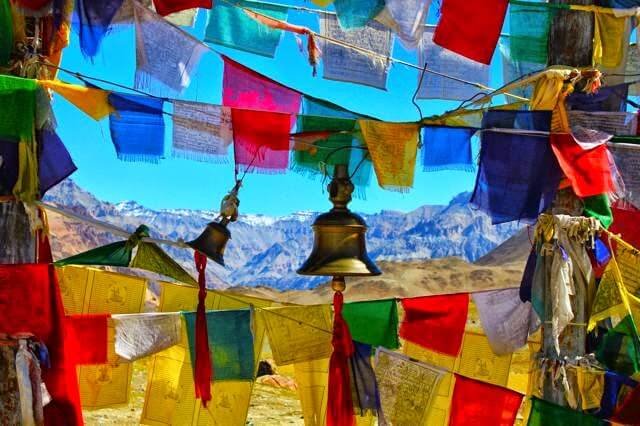
The flags are most often found to be arranged in a particular order from left to right starting with blue, white, red, green, and yellow. These flags are commonly put up on the 3rd day of the Tibetan New Year, ‘Losar’ and on momentous occasions like marriages and other important functions,. They are also put up to avoid illnesses and before embarking on journeys.
The flags embody the cycle of life, just as life is renewed, people put up new flags beside the old faded ones; it teaches us to embrace life’s changes.
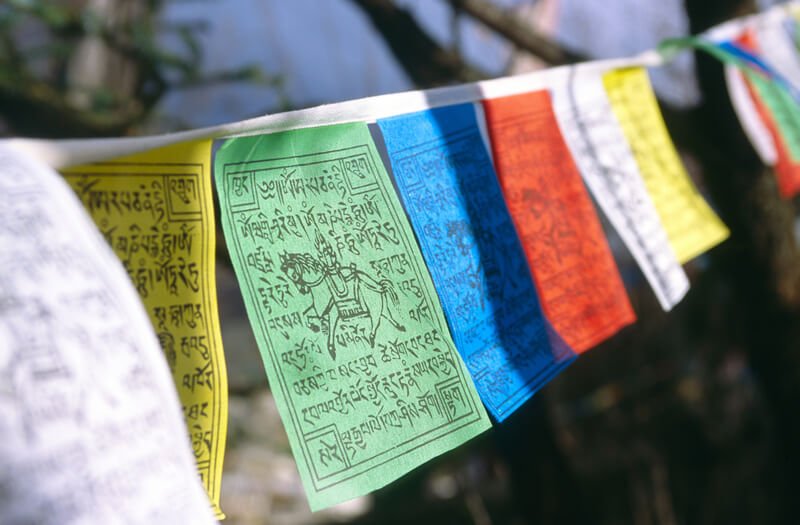
In a world full of turmoil some serene goodwill is just what we need.





